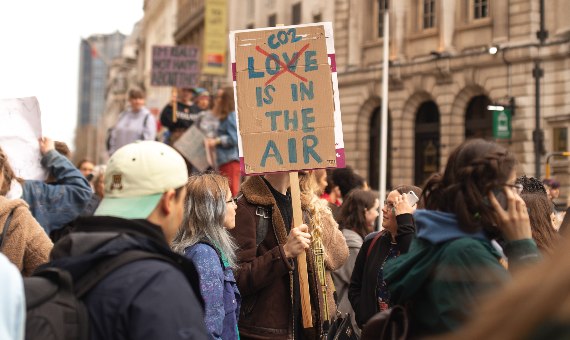The COVID-19 pandemic has changed the consumption and mobility patterns of the global population, and altered the estimated economic development for the coming years. Uncertainty over its duration, economic and social impact or the different response policies that will be implemented condition the existence of a wide range of energy futures.
However, if the simultaneous lockdown experiment in several countries has made anything clear, it is that if we change our consumption patterns, our influence on nature can also change. Although CO2 emissions have fallen due to the societies’ paralysis as a result of the SARS-CoV-2 virus, scientists warn that the illusion of emission reduction is not sufficient to reach the objectives of the Paris Agreement. Climate change is advancing relentlessly and the only possible response is climate action.
Energy efficiency: the key to climate action
Energy generation is one of the main sources of emissions to the atmosphere. That is why, in light of a post-COVID phase focused on sustainable economic conversion and reconstruction, we must change the way we produce, store and use energy.
Energy efficiency is crucial to changing the game: according to a report by the International Energy Agency (IEA), Capturing the Multiple Benefits of Energy Efficiency, if we adopt energy efficiency as the first option for new energy supplies, emissions could fall enough to avoid exceeding the maximum global warming of 2°C. Furthermore, according to the report mentioned above, it is estimated that the global economy could grow by up to 18 trillion dollars by 2035 thanks to energy efficiency, which provides other benefits like economic development, job creation and pollution reduction, as well as improving human health and alleviating poverty.

In this sense, the United Nations Environmental Program (UNEP) has a wide range of energy efficiency activities in the transportation, construction, lighting, energy and appliance sectors. With the SEforALL platform launched at the 2014 Climate Conference, the United Nations is working to achieve the objective of doubling the global rate of energy efficiency improvements by 2030.
The different energy scenarios in the post-COVID world
The more immediate effects of the virus on the energy sector are clear: global demand for energy will decline by five percent in 2020, energy-related CO2 emissions will fall seven percent and energy investments 18 percent. In the future of energy after the crisis, uncertainty will reign. The latest IEA report from 2020 analyzes the different post-COVID energy scenarios, assessing the different trajectories of the pandemic that condition the future of energy.
In the stated policies scenario (STEPS), Covid-19 is gradually controlled throughout 2021 and the global economy returns to pre-crisis levels in the same year. In addition, in this scenario, renewable energy covers 80 percent of the growth in the global demand for electricity through 2030.
The delayed recovery scenario (DRS) contemplates the same assumptions as the STEPS energy policy, but assumes that a prolonged pandemic would cause lasting damage to economic outlooks. In this case, the economy returns to pre-crisis levels in 2023, and the pandemic marks the start of a decade with the lowest growth rate in energy demand since 1930. The global demand for energy would recover to pre-crisis levels in early 2023 in the the most optimistic recovery scenario (STEPS), but this would be delayed until 2025 in case of an extended pandemic and deeper recession (DRS). Although the deceleration in energy demand growth puts downward pressure on oil and gas prices, significant declines in investment in 2020 also increase the future volatility of the market.

In the sustainable development scenario (SDS), the increase in clean energy policies and investments helps to fully achieve the sustainable energy goals. Obtaining a 40 percent reduction in emissions by 2030, for example, requires low carbon energy sources to produce 75 percent of global electricity, compared to less than 40 percent in 2019. In addition, more than 50 percent of the automobiles sold in 2030 should be electric, versus 2.5 percent in 2019.
Finally, the report describes the scenario of achieving net zero carbon emissions by 2050 (NZE2050), a longer-term vision in which more countries and businesses aim to become carbon neutral, thus expanding the effects of the Paris Agreement to the middle of the century.
A COMMON FACTOR IN ANY SCENARIO: THE RISE OF RENEWABLE ENERGY
In 2020, hydroelectric energy remains the largest source of renewable energy, followed by solar and offshore wind. But looking toward the future, if there is a common element in all of the energy scenarios it is the growth of renewable energy, with solar energy leading the way. Currently, building a coal or gas power plant is more expensive than building a photovoltaic solar power plant as solar projects currently offer one of the cheapest forms of electricity in history, according to the International Energy Agency. Moreover, in the coming decade, according to their forecasts, carbon and hydrogen capture, utilization and storage technologies will also increase.
Comments on this publication